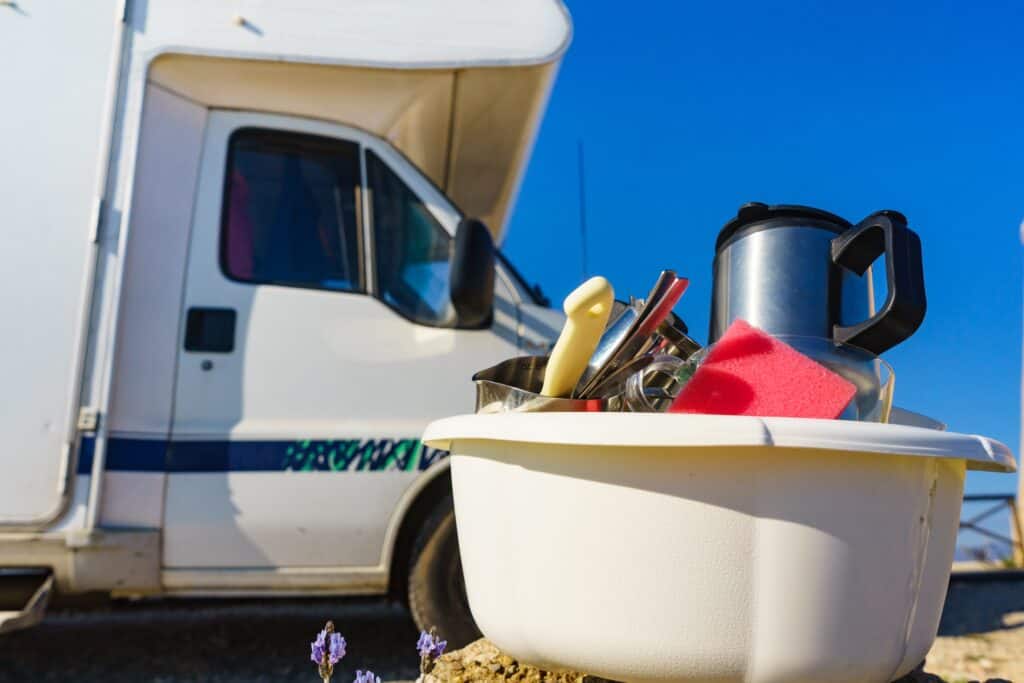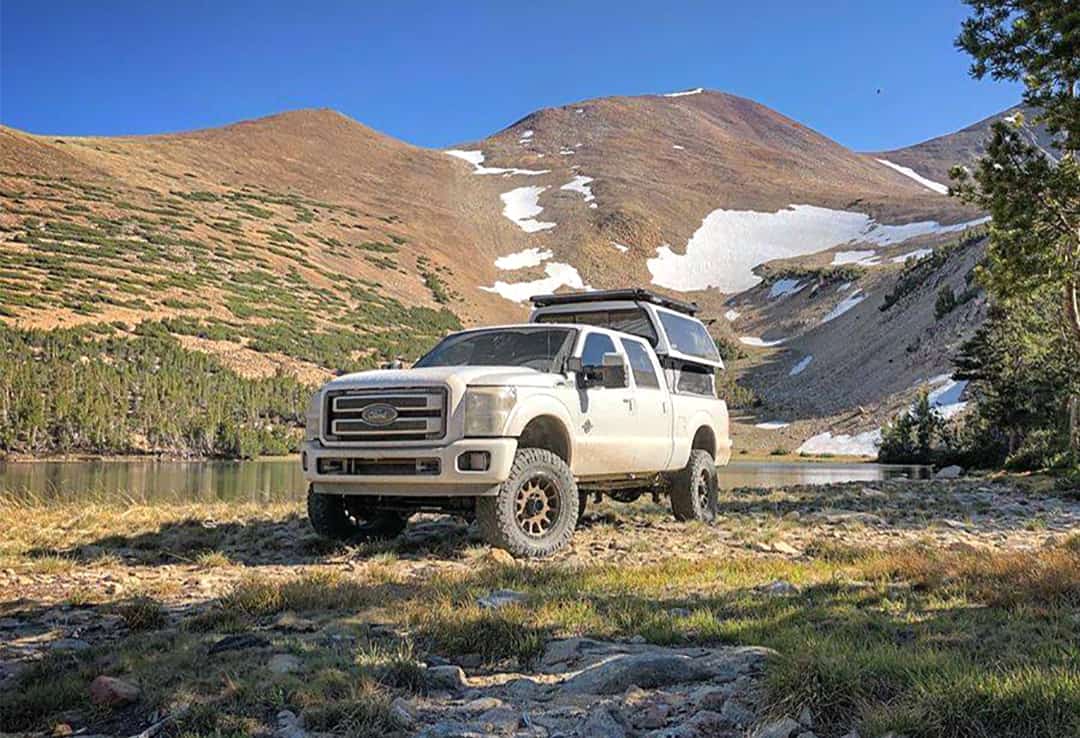
Why It’s Important To Use Biodegradable Products
Most RVers love camping in beautiful places because we love nature. We want the places we love to stay beautiful and natural. For this to happen, we need to live by a “take nothing and leave nothing” credo when we are camping.
It may surprise you to know that everyday items like toiletries, cleaning products, and all kinds of plastics can have a negative impact on the environment.
The benefits of biodegradable products
Biodegradable products can be broken down quickly by natural processes. Given the right conditions, they break down into natural compost, without producing any toxic chemicals as they do so. Products that aren’t biodegradable don’t break down at all, contain toxic chemicals, may take many years to degrade and produce toxic chemicals while doing so.
Non-biodegradable products have serious environmental impacts
Products that don’t biodegrade have significant and devastating environmental impacts. Non-biodegradable soaps and detergents contain ingredients that prevent them from breaking down without creating toxins that can harm the environment.
Here are just three of the non-biodegradable chemicals contained in most soaps, detergents, toothpaste, and cleaning products:
1. Petrochemicals
Petrochemicals are chemical compounds produced in the production of petroleum. The production of petroleum has negative environmental impacts that include air pollution, greenhouse gas production, acid rain, and ozone depletion.
2. Phosphates
Phosphates can be found in most soaps, detergents, and even toothpaste. As a matter of fact, 5% of all the world’s mined phosphate is used just in making laundry detergent. Phosphates from laundry detergent, shampoos, soaps, toothpaste, and cleaning products make their way into waterways via septic or sewage systems.
Once they get into waterways, phosphates help to cause toxic algae blooms. The algae responsible for these toxic blooms thrives wherever there is phosphorous in the water. While othe algae species can only survive when conditions a perfect, blue green algae is really tough. It thrives in any body of water as long as there’s phosphorous.
Blue algae depletes oxygen in the water and causes every living thing around it to die. Even worse, blue algae blooms produce toxins that can kill any animal that happens to ingest them.
3. Surfactants
Surface acting agents that reduce the surface tension of oil and water. Because they do this so well, surfactants are commonly used in laundry detergents, hand soaps, kitchen cleaners, and body washes. Surfactants are what help detergents”lift off” dirt and oils. The problem with them is that they are highly toxic to aquatic life.
Take fish for instance. Residual surfactants in the water break down the thin mucous layer on the fish’s skin. This mucous layer provides important protection for the fish, from both parasites and bacteria. After surfactants finally start to break down, they create toxic byproducts that kill fish and plants.
Why are plastics bad for the environment?
It’s hard to go through a day without using plastic. Even the keyboard I’m typing this on is made from plastic. By now, most people know that plastics are astoundingly bad for the environment. How are they bad? Let’s count the ways:
- Non-renewable resources are used in the manufacturing of plastics. The production of petroleum-based plastics uses 200,000 barrels of oil every day. That’s a lot of petroleum.
- Energy use: Biodegradable plastics use just 35% of the energy used to produce regular plastics.
- Greenhouse gases: In 2022, the manufacturing and incineration of plastic products will create nearly a billion tons of greenhouse gases.
- Pollution: Every year, the manufacturing of plastics creates enormous amounts of pollution. In addition, plastics now find their way into every concievable waterway in the world.
- Landfills are filling with plastic: Landfills now contain more discarded plastic than any other type of trash.
Recycling some types of plastics is helpful, but it isn’t the answer for a growing crisis in disposing of the large amount of plastic we discard. Making new items out of recycled materials uses energy and creates pollution. Biodegradable plastics could hold part of the answer to resolving the ongoing need for plastic products, while being able to dispose of them without harming the ennvironment.
Biodegradable plastics
New biodegradable plastics are now available, mainly for use in packaging, plastic bags, and plastic cutlery. Unlike other plastics, biodegradable plastics don’t use any petroleum for manufacturing. Instead of petroleum products, they are made out of organic matter, which uses far less energy to produce and breaks down into soil enhancing compost.
As a matter of fact, to earn the “biodegradable” designation, plastic products must completely compost in 180 days without creating any toxins. However, in order to break down into compost, discarded biodegradable plastic items need to be in a compost pile, not a landfill. This is because the bacteria that aids the decomposition process needs oxygen to do their job. Landfills are too tightly packed to allow enough oxygen for composting to occur.
Biodegradable products for camping
It used to be hard to find products that were marketed as biodegradable. They were often located in a special “natural products” section of stores. They often had the reputation of being less convenient or effective than their less environmentally friendly counterparts. Luckily, it’s now easy to find many convenient, biodegradable products that work really well. Here are a few examples:
- Biodegradable trash bags: These compostable bags are available in every conceivable size.
- Biodegradable dog waste bags
- Compostable bamboo flatware: These are handy when water conservation is an issue and can be burned as kindling when starting a campfire.
- Compostable paper plates: Compostable paper plates help to conserve freshwater and make excellent campfire starters.
- Laundry detergent strips: Laundry detergent strips are biodegradable, contain no environmentally harmful chemicals, and come in a cardboard envelope. They clean even the dirtiest clothes and get excellent user reviews.
- Toilet cleaner: Biodegradable toilet cleaner strips are safe for use in RV toilets.
- Dish soap
- Household cleaner
- Shampoo: There are a myriad of biodegradable shampoos on the market for every hair type.
- Toothpaste: Try a biodegradable, phosphate-free toothpaste. You won’t miss the phosphate.
- Soap: Biodegradable, phosphate-free soap will keep you clean without harming the environment.
One of the best parts about RVing is engaging with the community of traveling enthusiasts. iRV2 forums allow folks to chat with other RVers online, and get other perspectives on everything RVing, including products, destinations, RV mods, and more.
Related articles:




